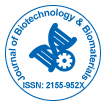हमारा समूह 1000 से अधिक वैज्ञानिक सोसायटी के सहयोग से हर साल संयुक्त राज्य अमेरिका, यूरोप और एशिया में 3000+ वैश्विक सम्मेलन श्रृंखला कार्यक्रम आयोजित करता है और 700+ ओपन एक्सेस जर्नल प्रकाशित करता है जिसमें 50000 से अधिक प्रतिष्ठित व्यक्तित्व, प्रतिष्ठित वैज्ञानिक संपादकीय बोर्ड के सदस्यों के रूप में शामिल होते हैं।
ओपन एक्सेस जर्नल्स को अधिक पाठक और उद्धरण मिल रहे हैं
700 जर्नल और 15,000,000 पाठक प्रत्येक जर्नल को 25,000+ पाठक मिल रहे हैं
में अनुक्रमित
- सूचकांक कॉपरनिकस
- गूगल ज्ञानी
- शेरपा रोमियो
- जे गेट खोलो
- जेनेमिक्स जर्नलसीक
- शैक्षणिक कुंजी
- अनुसंधान बाइबिल
- चीन राष्ट्रीय ज्ञान अवसंरचना (सीएनकेआई)
- कृषि में वैश्विक ऑनलाइन अनुसंधान तक पहुंच (अगोरा)
- इलेक्ट्रॉनिक जर्नल्स लाइब्रेरी
- RefSeek
- हमदर्द विश्वविद्यालय
- ईबीएससीओ एज़
- ओसीएलसी- वर्ल्डकैट
- एसडब्ल्यूबी ऑनलाइन कैटलॉग
- जीव विज्ञान की वर्चुअल लाइब्रेरी (विफैबियो)
- पबलोन्स
- चिकित्सा शिक्षा और अनुसंधान के लिए जिनेवा फाउंडेशन
- यूरो पब
- आईसीएमजेई
उपयोगी कड़ियां
एक्सेस जर्नल खोलें
इस पृष्ठ को साझा करें
अमूर्त
The use of nanomaterials in the cultural heritage
Mauro Francesco La Russa
In recent decades an apparent acceleration in the rate of stone decay and the growing worldwide interest in preserving historic structures are promoting a significant increase in the number of studies addressed to conservation and restoration. For this reason, the understanding of the mechanisms responsible for the material decay is required, as well as the optimization of the stone protection strategies. The main weathering agent is represented by water. It can transport pollutants through the structure of the stone, causing surface erosion, disintegration and cracking, thanks to wetting-drying or freezing-thawing cycles within the pores. Moreover, water make it possible the growth of biological patinas, which can induce further stone decay. In the field of Restoration of cultural heritage, nanoparticles are successfully used. In this framework, various researches funded by several National projects will be presented. In particular, the data arising from COMAS project (COnservazione programmata in situ dei Manufatti Archeologici Sommersi) concerning the study of degradation and alteration phenomena in the underwater environment will be exposed. They regarded characterization and in situ experimental testing of new nanomaterials on marbles and bricks of the archaeological site of Baia (Naples, Italy). With regard to the mortars used in the underwater environment, the preliminary results of MaTACoS (Materiali e Tecnologie avanzate Applicate alla Conservazione Subacquea) project (still in progress), funded by MISE - Ministero per lo Sviluppo Economico, will be introduced. At the same time, the results of the NANOPROTECH Project, funded by the Calabria Region, concerning the testing of Titanium dioxide in different achaeological sites ( foe example Trevi Fountain) will be discussed.
विषयानुसार पत्रिकाएँ
- अंक शास्त्र
- अभियांत्रिकी
- आनुवंशिकी एवं आण्विक जीवविज्ञान
- इम्यूनोलॉजी और माइक्रोबायोलॉजी
- औषधि विज्ञान
- कंप्यूटर विज्ञान
- कृषि और जलकृषि
- केमिकल इंजीनियरिंग
- चिकित्सीय विज्ञान
- जीव रसायन
- नर्सिंग एवं स्वास्थ्य देखभाल
- नैदानिक विज्ञान
- नैनो
- पदार्थ विज्ञान
- पर्यावरण विज्ञान
- पशु चिकित्सा विज्ञान
- पादप विज्ञान
- बायोमेडिकल साइंसेज
- भूविज्ञान और पृथ्वी विज्ञान
- भोजन एवं पोषण
- भौतिक विज्ञान
- रसायन विज्ञान
- व्यवसाय प्रबंधन
- सामाजिक एवं राजनीतिक विज्ञान
- सामान्य विज्ञान
- सूचना विज्ञान
क्लिनिकल एवं मेडिकल जर्नल
- आणविक जीव विज्ञान
- आनुवंशिकी
- इम्मुनोलोगि
- एनेस्थिसियोलॉजी
- कार्डियलजी
- कीटाणु-विज्ञान
- कैंसर विज्ञान
- गैस्ट्रोएंटरोलॉजी
- ज़हरज्ञान
- तंत्रिका-विज्ञान
- त्वचा विज्ञान
- दंत चिकित्सा
- दवा
- नर्सिंग
- नेत्र विज्ञान
- नेफ्रोलॉजी
- नैदानिक अनुसंधान
- पल्मोनोलॉजी
- प्रजनन चिकित्सा
- बच्चों की दवा करने की विद्या
- भौतिक चिकित्सा एवं पुनर्वास
- मधुमेह और एंडोक्राइनोलॉजी
- मनश्चिकित्सा
- रुधिर
- रेडियोलोजी
- शल्य चिकित्सा
- संक्रामक रोग
- स्वास्थ्य देखभाल
- हड्डी रोग

 English
English  Spanish
Spanish  Chinese
Chinese  Russian
Russian  German
German  French
French  Japanese
Japanese  Portuguese
Portuguese  Telugu
Telugu